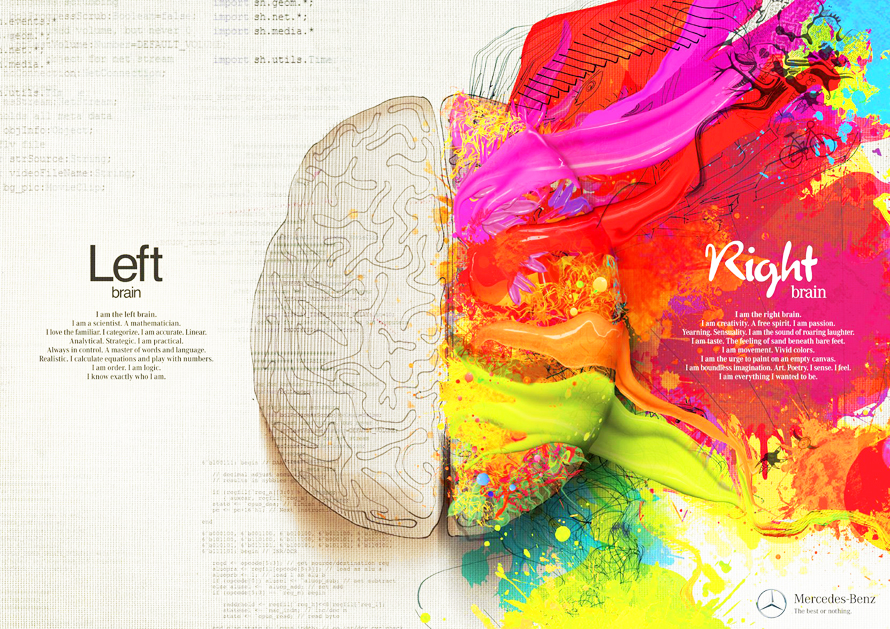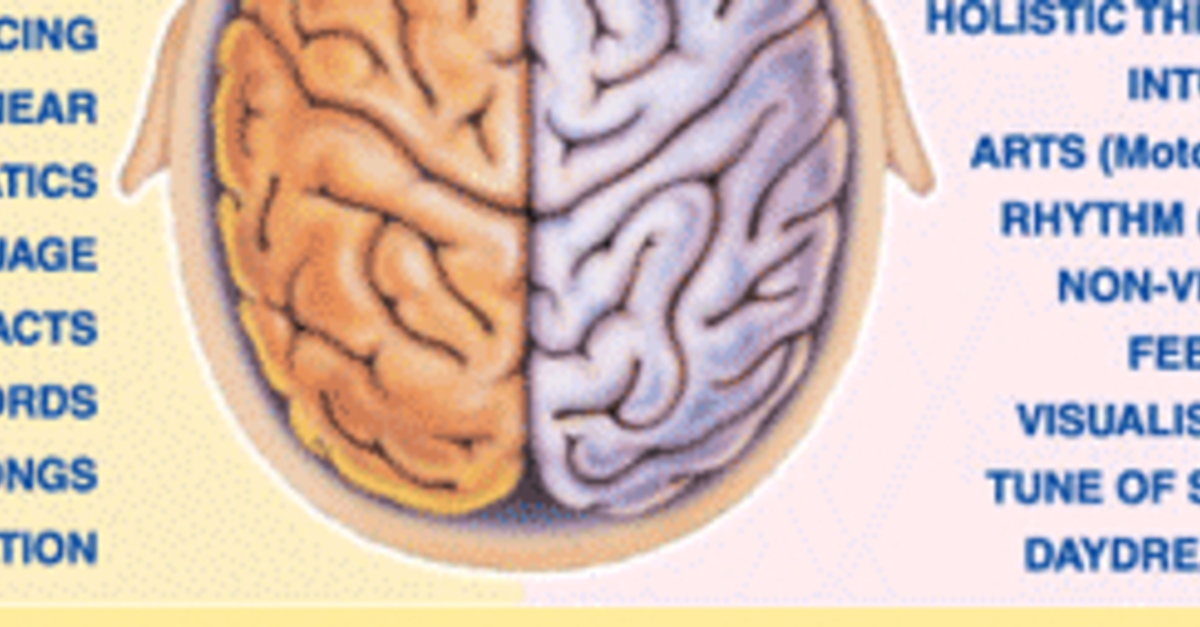
Our brains consist of two sides or hemispheres. Children with behavioral, academic, social, or other challenges often have an imbalance in hemispheric brain communication – what we refer to as functional disconnection syndrome, or where one hemisphere is processing information too slowly. This causes one side of the brain to be stronger, while the other side develops more slowly and is weaker.
The right hemisphere of the brain controls sensory processing and expression. Children who are left brain weak are often very visual, spontaneous, emotional and intuitive but may struggle academically with memorizing facts and paying attention to details.
The left hemisphere of the brain controls learning and information processing. Children who are right brain weak tend to be more analytical in their thinking and typically perform well academically. They have a stronger ability to memorize large amounts of data, have a large vocabulary and are detail oriented.
Take a Quizz
Choose the one sentence that is more true. Do not leave any blanks.
1. A ) It's fun to take risks.
B ) I have fun without taking risks.
2. A ) I look for new ways to do old jobs.
B ) When one way works well, I don't change it.
3. A ) I begin many jobs that I never finish.
B ) I finish a job before starting a new one.
4. A ) I'm not very imaginative in my work.
B ) I use my imagination in everything I do.
5. A ) I can analyze what is going to happen next.
B ) I can sense what is going to happen next.
6. A ) I try to find the one best way to solve a problem.
B ) I try to find different answers to problems.
7. A ) My thinking is like pictures going through my head.
B ) My thinking is like words going through my head.
8. A ) I agree with new ideas before other people do.
B ) I question new ideas more than other people do.
9. A ) Other people don't understand how I organize things.
B ) Other people think I organize well.
10. A ) I have good self-discipline.
B ) I usually act on my feelings.
11. A ) I plan time for doing my work.
B ) I don't think about the time when I work.
12. A ) With a hard decision, I choose what I know is right.
B ) With a hard decision, I choose what I feel is right.
13. A ) I do easy things first and important things later.
B ) I do the important things first and the easy things later.
14. A ) Sometimes in a new situation, I have too many ideas.
B ) Sometimes in a new situation, I don't have any ideas.
15. A ) I have to have a lot of change and variety in my life.
B ) I have to have an orderly and well-planned life.
16. A ) I know I'm right, because I have good reasons.
B ) I know I'm right, even without good reasons.
17. A ) I spread my work evenly over the time I have.
B ) I prefer to do my work at the last minute.
18. A ) I keep everything in a particular place.
B ) Where I keep things depends on what I'm doing.
19. A ) I have to make my own plans.
B ) I can follow anyone's plans.
20. A ) I am a very flexible and unpredictable person.
B ) I am a consistent and stable person.
21. A ) With a new task, I want to find my own way of doing it.
B ) With a new task, I want to be told the best way to it.
How to score...
1. Give yourself one point for each time you answered "A" for questions: 1, 2, 3, 7, 8, 9, 13, 14, 15, 19, 20, 21.
2. Give yourself one point for each time you answered "B" for questions: 4 ,5, 6, 10, 11, 12, 16, 17, 18.
3. Add all points. Totals imply:
0-4: strong left brain
The left-side of the brain is sequential, time-oriented and tells one how to think and what to believe and what choice to make. Left-brainers can answer questions quickly, and are strong in math and science.
5-8: moderate left brain
Moderate left brain shares some similarities with strong left brain, but in certain respects it is more flexible. This brain type shares characteristics of both strong left brain and middle brain.
9-13: middle brain
The middle-brain of the brain is more flexible than either the right or left. This person might be that uncommon Mathematician/Artist. But when it comes to decision making, middle-brain thinking people sometimes get confused because their brain bounces between the right and left preferences during decision making! However, these thinkers benefit from logic from the left and intuition from the right.
14-16: moderate right brain
Moderate right brain shares some similarities with strong right brain, but in certain respects it is more flexible. This brain type shares characteristics of both strong right brain and middle brain.
17-21: strong right brain
The right-side of the brain is intuitive and emotional. This hemisphere guides the decisions of the creative thinker that are made throughout the day. Right brainers are very intuitive and have great skill when it comes to seeing through lies or tricks.

